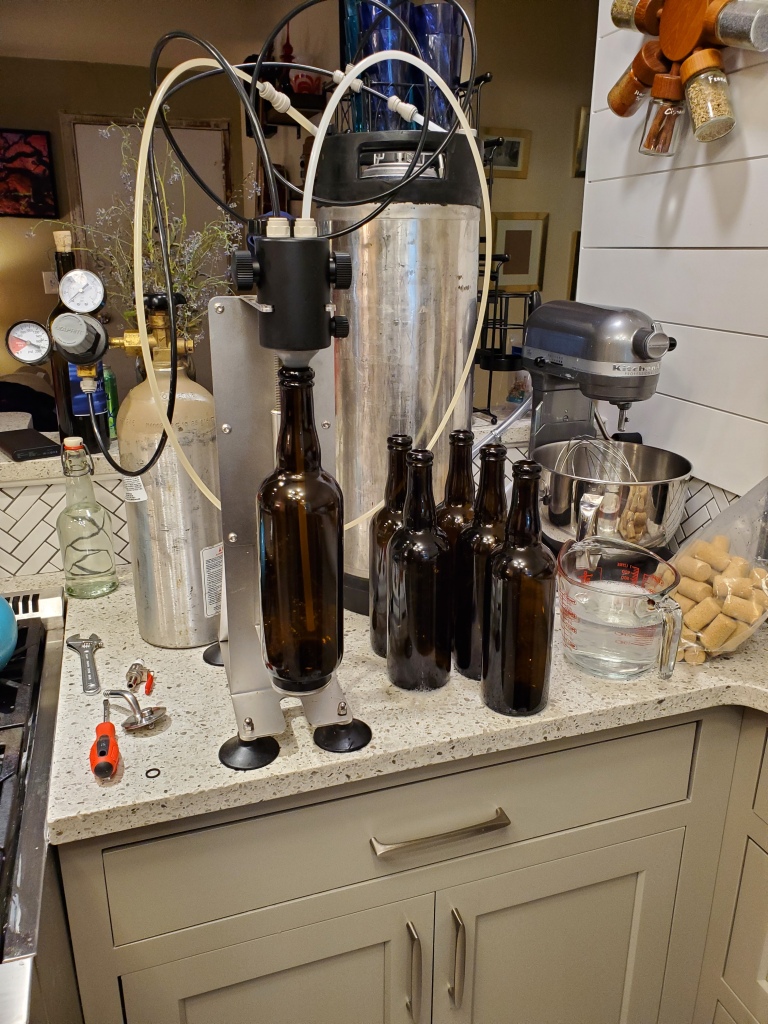Bottle conditioning is the biggest wildcard in brewing. Does it matter? Does it improve the flavor of the beer? Does it scrub oxygen from the beer?

The first two questions are certainly subjective. The latter can be proven to some extent. But what home brewer is going to send their beer off to a lab to determine how much dissolved oxygen is in the wort, and then determine how much dissolved oxygen is in the beer?
I have much better ways to spend a couple hundred dollars. Hell, I’ve never even sent my water off for analysis.
What I am attempting to do though is to do what I didn’t do the last time I made a Belgian Tripel: bottle condition it. To be honest, I gave up on bottle conditioning early on. My results were hit and miss, and few styles seem to benefit from it. But Belgian ales are supposed to be bottle conditioned. The first time I made this recipe I did not bottle condition. I actually forgot what I was planning and instead kegged it and put it immediately on gas. With that said, I brought it to a club meeting and a guest professional brewer thought it was excellent.
So what does bottle conditioning bring to the table? If anything, it is similar to the benefit of moving from extract to whole grain. Extract beers can be excellent; all extract does its remove the water contribution to the mash. Bottle conditioning utilizes the leftover yeast (or in my case a neutral yeast) to naturally carbonate the beer in the bottle. Assuming my math is right, I should end up with about 3.5 volumes of carbonation dissolved in the solution (the delta beyond the calculated 0.86 volumes I had from the fermentation). If not… I may end up with bottle bombs.
The joy of brewing!

I can’t wait to try it!
LikeLike